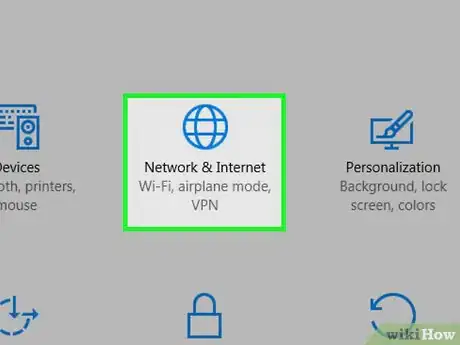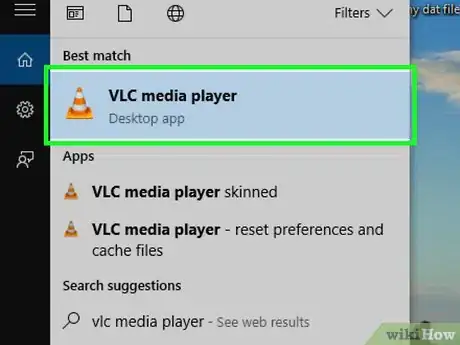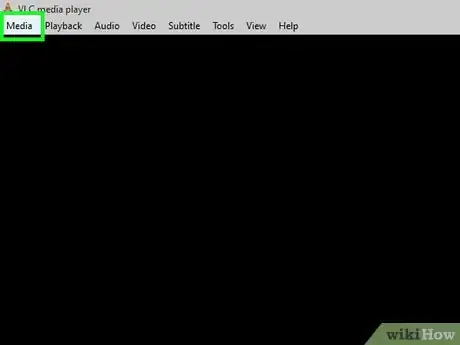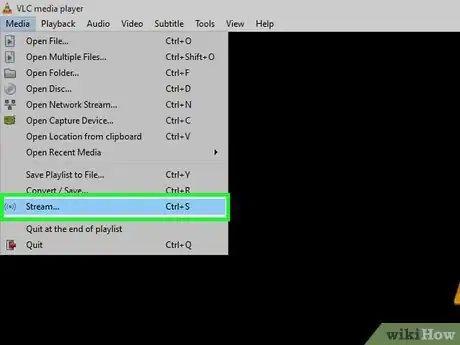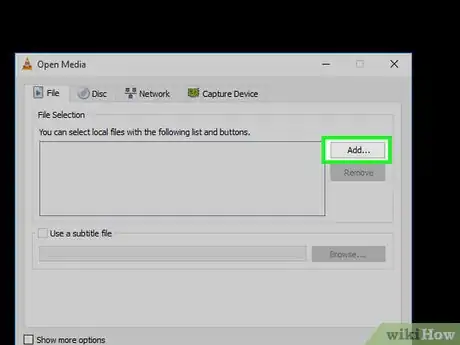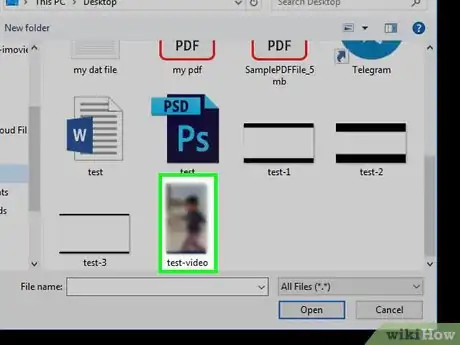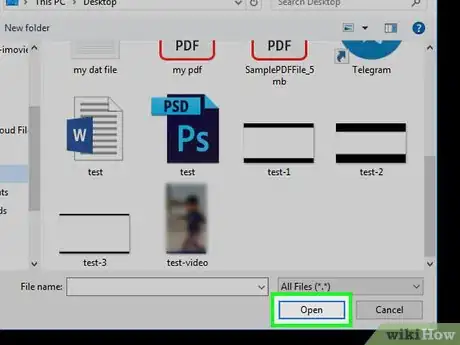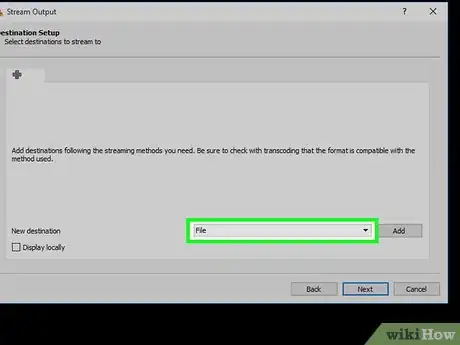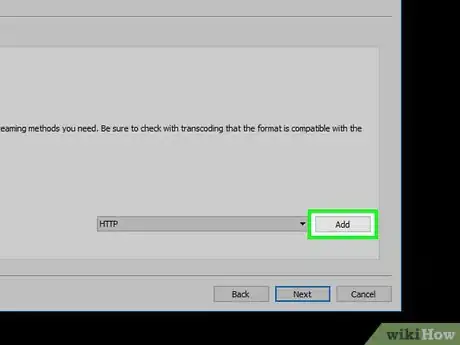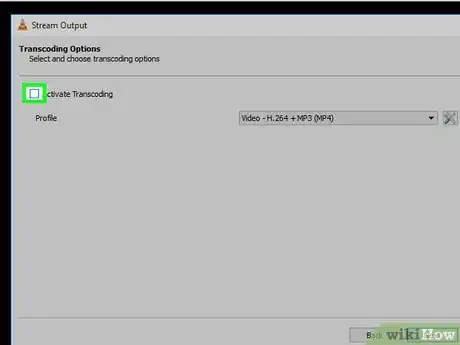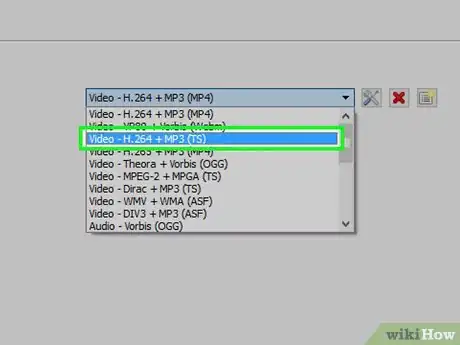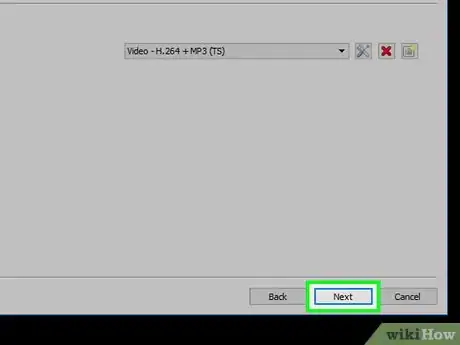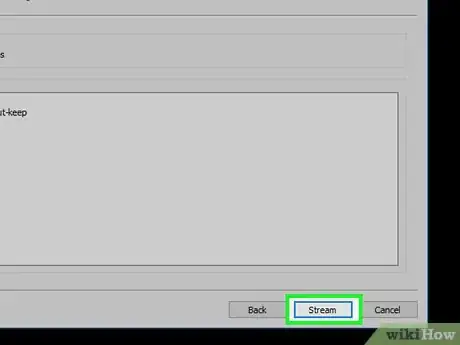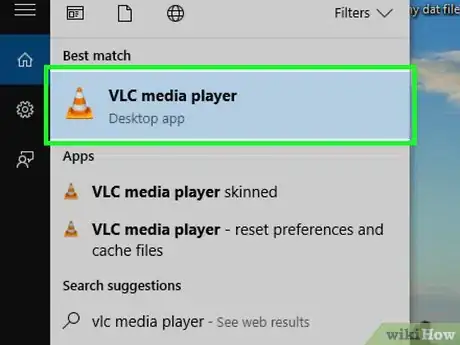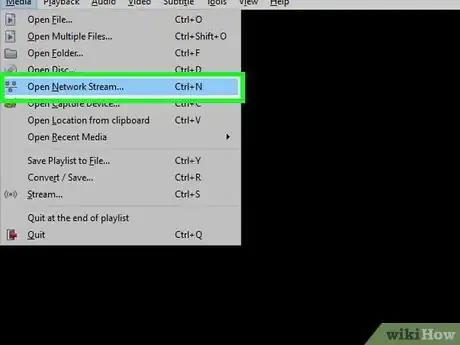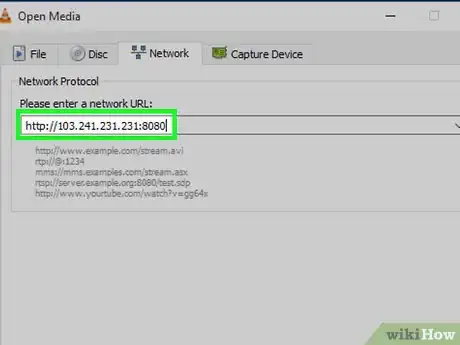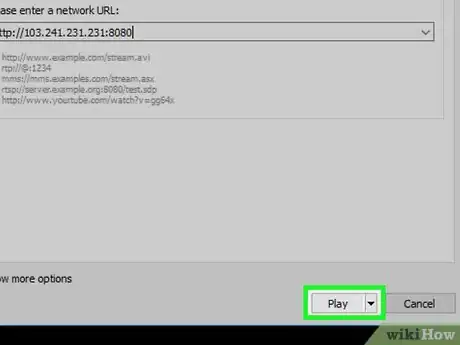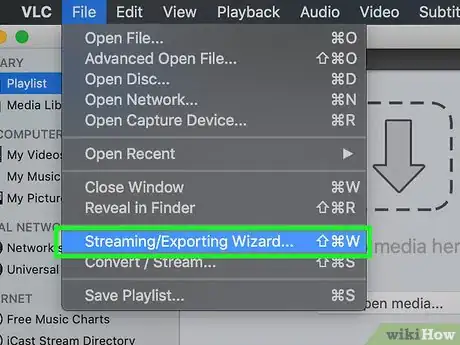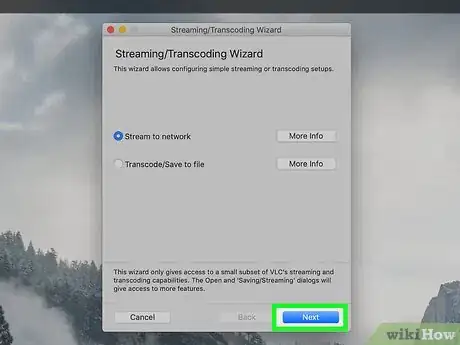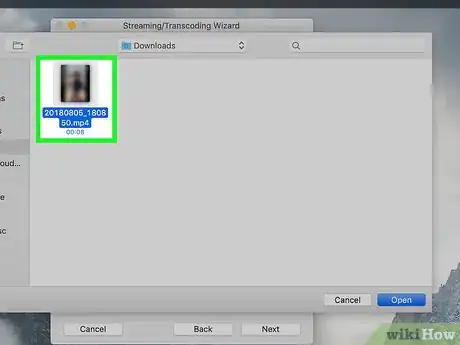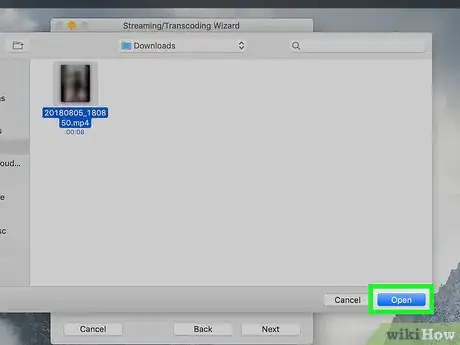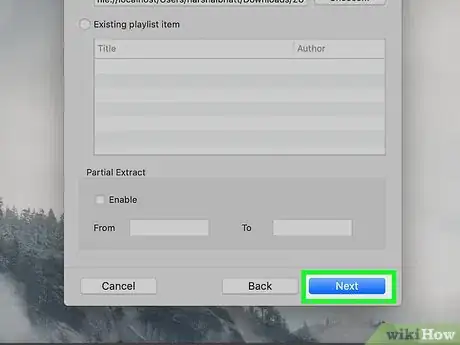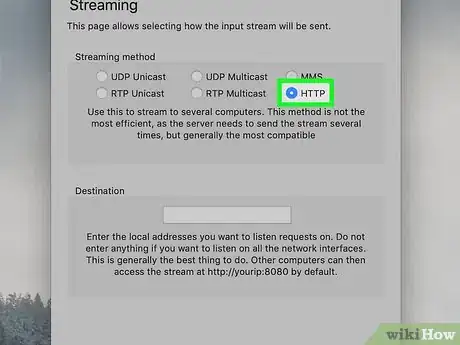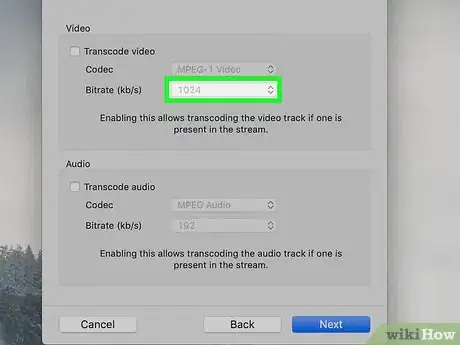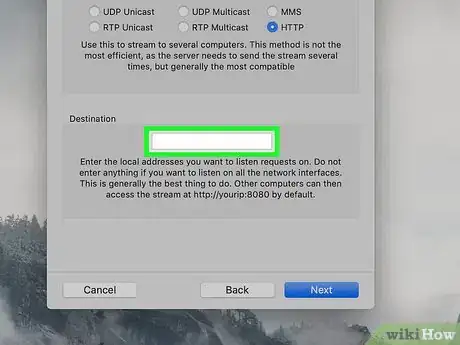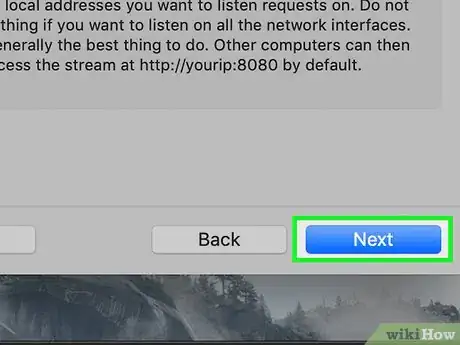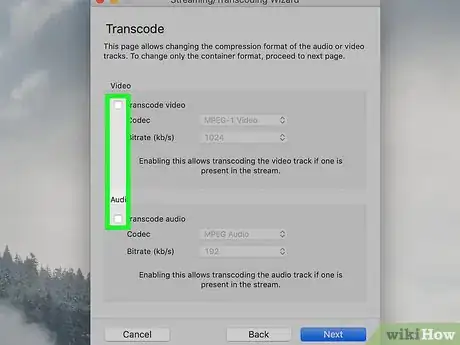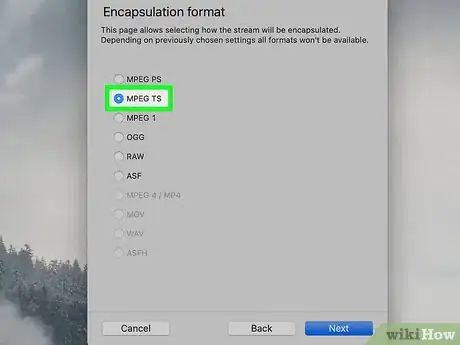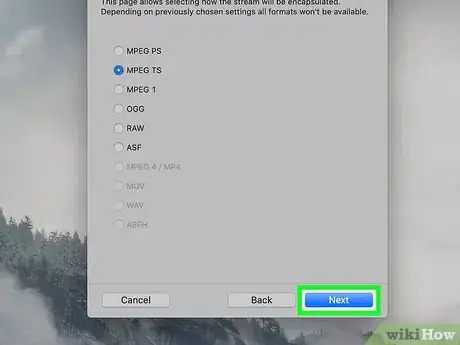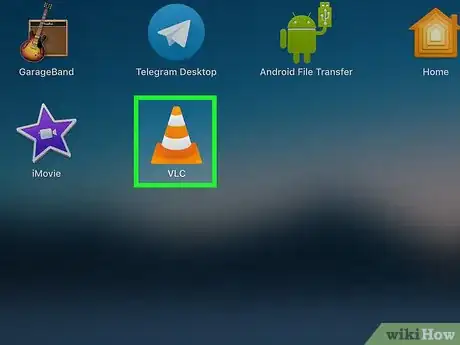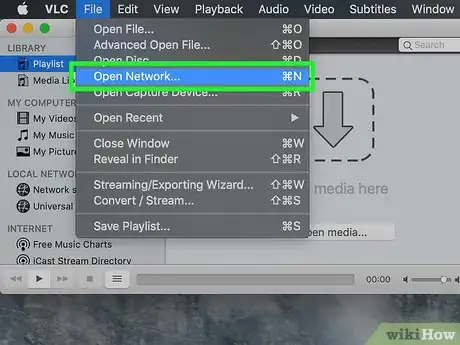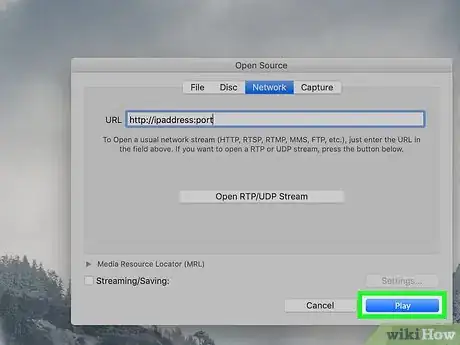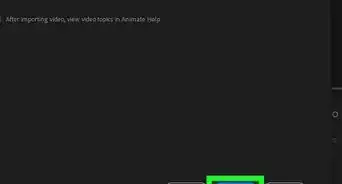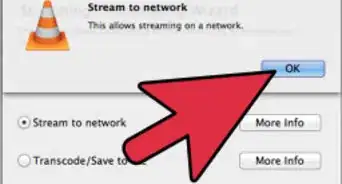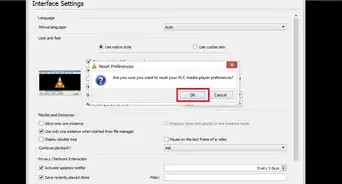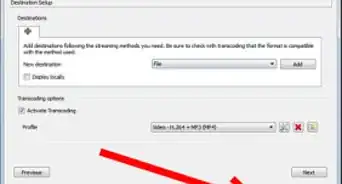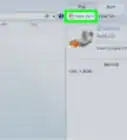An easy guide to streaming video and audio over a network using simple free software
X
This article was co-authored by wikiHow staff writer, Jack Lloyd. Jack Lloyd is a Technology Writer and Editor for wikiHow. He has over two years of experience writing and editing technology-related articles. He is technology enthusiast and an English teacher.
The wikiHow Tech Team also followed the article's instructions and verified that they work.
This article has been viewed 719,995 times.
Learn more...
This wikiHow teaches you how to use VLC Media Player to stream a video playing on one computer to another computer on the same Internet network. To do this, you'll need the free VLC Media Player program installed on both computers, and both computers will have to be on the same wireless network.
Things You Should Know
- Install VLC Media Player on both the computer you're streaming from and the computer you're streaming to.
- You'll need the IP addresses of both computers to set up the stream.
- To stream multiple videos in a row, create a playlist in VLC before broadcasting.
Steps
Part 1
Part 1 of 3:
Getting Ready
-
1Install VLC Media Player on both computers. If you haven't yet done so, you'll need to install VLC Media Player on both the computer that you want to use to stream and the computer on which you want to receive the stream.
- VLC is available for free on both Windows and Mac computers, as well as on most Linux distributions.
-
2Find the IP address of both computers. In order to stream a video from your computer to another computer on your network, you'll need to know the IP address of both computers.Advertisement
-
3Make sure that both computers are on the same network. Both your computer and the other computer must be connected to the same Internet network (e.g., your home router) for you to be able to stream video to the other computer.
- If your router has multiple channels (e.g., a 2.4 GHz channel and a 5.0 GHz channel), make sure that both computers are on the same channel as well.
-
4Understand that streaming may not work on your network. If your network has a low upload speed or several items using it at once (e.g., phones, consoles, other computers, etc.), you may be unable to stream across your network. This can be remedied by upgrading your Internet speed through your service provider.
- If your router and/or modem are more than a few years old, attempting to stream may cause one or both of them to crash.
Advertisement
Part 2
Part 2 of 3:
Stream on Windows
-
1Open VLC Media Player. Its app icon resembles an orange-and-white traffic cone.
-
2Click Media. This tab is in the top-left corner of the VLC Media Player window. A drop-down menu will appear.
-
3Click Stream…. It's near the bottom of the Media drop-down menu. Doing so opens the Stream window.
-
4Click Add…. You'll see this button on the right side of the window in the "File selection" section. This will prompt a File Explorer window to open.
-
5Select a video. Click a video that you want to stream. You may first have to select a folder in the left-hand sidebar or open a folder in the main File Explorer window to find the file that you want.
-
6Click Open. It's in the bottom-right corner of the window. This will add the video to the stream.
-
7Click Stream. You'll find it at the bottom of the window.
-
8Click Next. It's in the bottom-right side of the window. Doing so takes you to the Destination Setup window.
-
9Click the "New destination" drop-down box. This drop-down box usually has the word "File" in it. A drop-down menu will appear.
-
10Click HTTP. It's in the drop-down box.
-
11Click Add. This is to the right of the HTTP box. Doing so opens the HTTP setup page.
-
12Note the port listed here. You'll need to know through which port the stream is traveling later.
-
13Enter the other computer's IP address. Do this in the "Path" text field. You'll notice a slash (/) in the "Path" field—don't delete the slash when entering your IP address.
-
14Click Next.
-
15Uncheck the "Activate Transcoding" box. It's near the top of the window.
-
16Click the "Profile" drop-down box. You'll find this on the right side of the window. Doing so prompts a drop-down menu.
-
17Select the "TS" format. Click Video - H.264 + MP3 (TS) in the drop-down menu.
-
18Click Next.
-
19Check the "Stream all elementary streams" box. It's near the top of the page.
-
20Click Stream. It's at the bottom of the window. Doing so will complete the stream setup and begin streaming your video to the other computer.
-
21Open VLC on the other computer.
-
22Open the Network Stream window. Click Media, then click Open Network Stream….
-
23Enter the stream's address. Type in http://ipaddress:port where "ipaddress" is the streaming computer's IP address and "port" is the port number that was listed on the "HTTP" page.
- For a stream from a computer with an IP address of 123.456.7.8 and a port of 8080, you would type http://123.456.7.8:8080 here.
-
24Click Play. After a delay of up to 30 seconds, you should see the other computer's video begin playing in your media player.
Advertisement
Part 3
Part 3 of 3:
Stream on Mac
-
1Open VLC Media Player. Its app icon resembles an orange-and-white traffic cone.
-
2Click File. This menu item is in the upper-left side of the Mac's screen. A drop-down menu will appear.
-
3Click Streaming/Exporting Wizard…. You'll find this option near the bottom of the drop-down menu.
-
4Check the "Stream to network" box. It's near the top of the window.
-
5Click Next. This blue button is in the bottom-right side of the window.
-
6Click Choose…. It's to the right of the "Select a stream" text box. A Finder window will open.
- The "Select a stream" checkbox should be checked, but if it isn't, check it before clicking Choose... here.
-
7Select a video. Click a video that you want to stream. You may first have to click a folder in the left-hand Finder pane or open a folder in the main Finder window to find the video.
-
8Click Open. It's in the bottom-right corner of the window.
-
9Click Next.
-
10Check the "HTTP" box. This option is in the middle of the page. You should see "Port" and a "Source" (or "Path") text fields appear on the page.
-
11Note the port listed here. You'll need to know through which port the stream is traveling later.
-
12Enter the other computer's IP address. Do this in the "Source" or "Path" text field.
- If there's a slash (/) in the text field, leave it there and enter the IP address after it.
-
13Click Next.
-
14Make sure that both "Transcode" boxes are unchecked. Both of these should be in the middle of the page.
-
15Click Next.
-
16Check the "MPEG TS" box. It's in the middle of the page. This may be the only option that you have for the stream.
-
17Click Next twice. Do this on the current page and on the "Additional streaming options" page.
-
18Click Finish. It's a blue button at the bottom of the window. Doing so completes your stream setup and begins streaming to the other computer.
-
19Open VLC on the other computer.
-
20Open the Network Stream window. Click File, then click Open Network….
-
21Enter the stream's address. Type in http://ipaddress:port where "ipaddress" is the streaming computer's IP address and "port" is the port number that was listed on the "HTTP" page.
- For a stream from a computer with an IP address of 123.456.7.8 and a port of 8080, you would type http://123.456.7.8:8080 here.
-
22Click Play. After a delay of up to 30 seconds, you should see the other computer's video begin playing in your media player.
Advertisement
Community Q&A
-
QuestionWhat about playing two different movies on two TVs at the same time?
 Community AnswerThis is possible, but you would have to have two HDMI ports on your computer. Go under VLC tools → Preferences → Interface. Under the interface tab, uncheck "allow only one instance" and "use only one instance when started from file manager," both of which are under the section "Playlists and Instances." Next, hook up the two HDMI cords to your computer and the two TVs. Now, go to Menu → Stream and choose your first movie file. Set the stream output to the monitor 2. Do this again, but with the other movie file and set the output to monitor 3.
Community AnswerThis is possible, but you would have to have two HDMI ports on your computer. Go under VLC tools → Preferences → Interface. Under the interface tab, uncheck "allow only one instance" and "use only one instance when started from file manager," both of which are under the section "Playlists and Instances." Next, hook up the two HDMI cords to your computer and the two TVs. Now, go to Menu → Stream and choose your first movie file. Set the stream output to the monitor 2. Do this again, but with the other movie file and set the output to monitor 3.
Advertisement
Warnings
- You may need to forward a port in your router in order to see the stream.⧼thumbs_response⧽
- There will most likely be a moderate reduction in video quality on the computer that receives the stream.⧼thumbs_response⧽
Advertisement
About This Article
Advertisement



